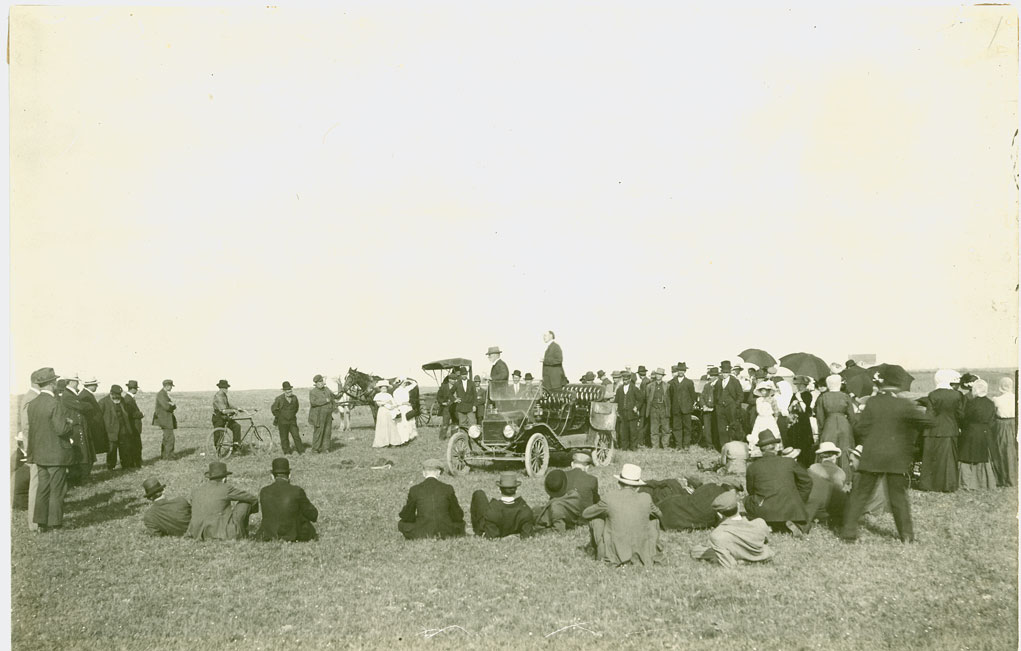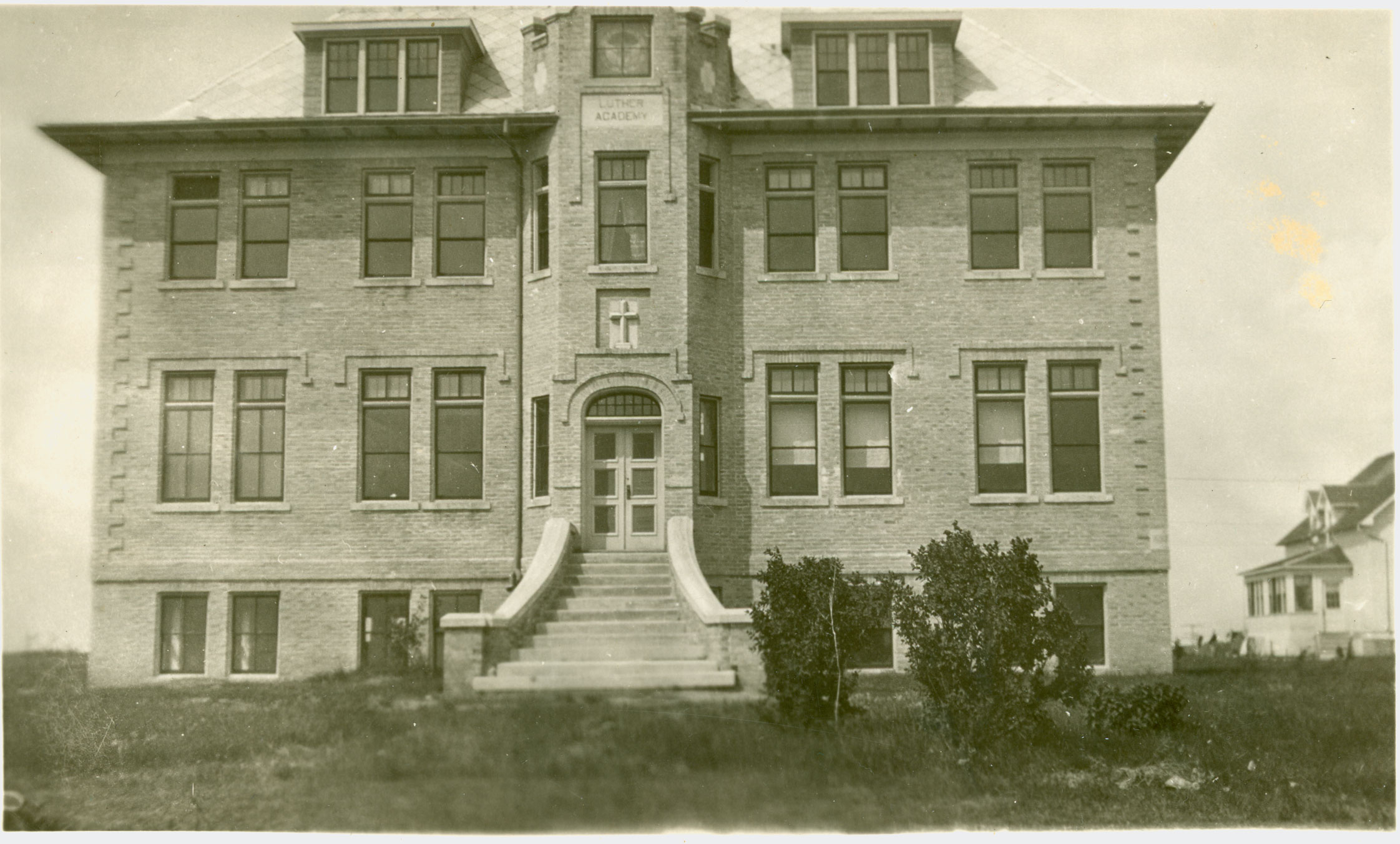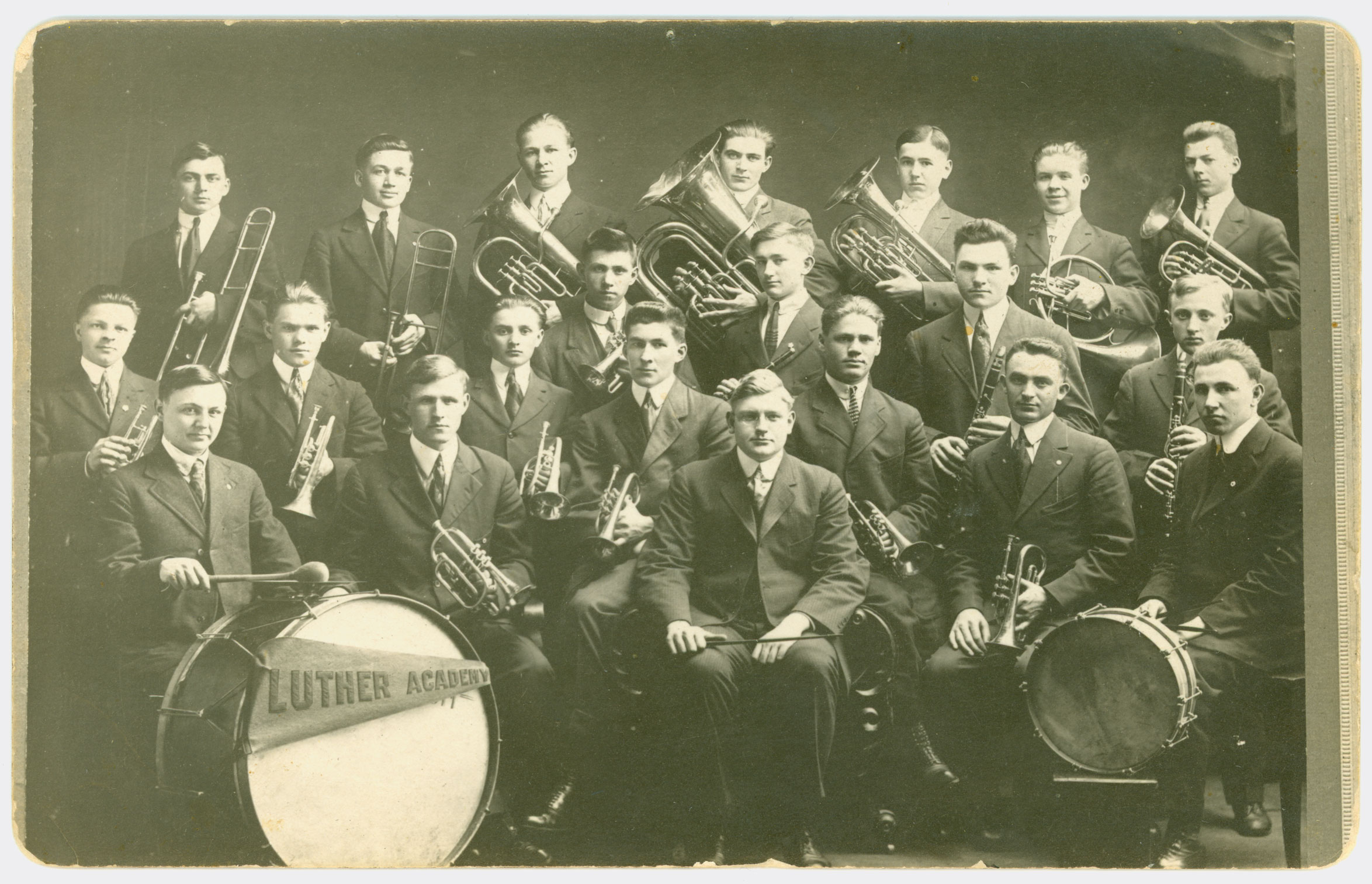1910's



1910 – The US based German Lutheran church known as the "Joint Synod of Ohio and Other States" approves an Academy for western Canada and elects a board. The Academy will offer general “higher education” to all and also prepare young men who wish to enter the Synod’s seminary, “Luther Seminary,” in Saint Paul, Minnesota.
1910 – In September, the first board meeting is held in Earl Grey, Saskatchewan.
1911 – A major fundraising campaign begins: $15,000 is to be raised in western Canada and $5,000 in the US.
1913 – After groundbreaking and cornerstone laying ceremonies, dedication of the finished Academy building is held in November. The building is located a mile from the centre of Melville, Saskatchewan. Funded entirely by donations, the total cost of the school is $22,000. The three-story (plus basement) brick building includes a dormitory for 56 male students, three classrooms, a library, a kitchen, dining area, and chapel. With no indoor water, there is a spacious “six-seater” outside in back. Today, the Luther Academy building has been restored as a regional heritage site and houses the Melville Heritage Museum.
1913 – 1926 - Pastor Heinrich (Henry) Schmidt is appointed Director (President) of the Academy and is consistently known as “Professor Schmidt.” He continues to teach at Luther College until 1949.
1914 – Classes begin on January 5, 1914 with three teachers. The first semester enrolment is thirty-two students, including two girls, and two foreign students. Although no dormitory plans had been made for girls, they still attended continuously. Almost all of the students were assigned to Grade 7 and 8, with a half dozen assigned to Grade 9. All instruction is in English except for Religion which, of course, can only be properly understood using German. The twice daily Chapel services are also in German, as is the service at St. Paul’s Lutheran Church in Melville, which all students are required to attend on Sundays. This pattern continues even after the Academy moves to Regina, Saskatchewan.
1914 – The Academy teaches a wide range of subjects including traditional high school curriculum, plus German, Greek, Latin, business, agriculture, civics, business, and penmanship. All boys at the Academy are required to wear to class a suit jacket, white shirt and collar, and necktie. This dress code continues after the Academy moves to Regina, Saskatchewan.
1914-1918 – The “Great War” collapses the Melville economy and stalls fundraising. Enrollment remains static until the end of the war.
1915 – The Academy is supporting a “ministry to local German youth,” meaning pastoral visits to, and conducting worship services with, German prisoners of war being held at nearby prison camps.
1915 – Director Schmidt organizes a "Brass choir," which later evolves into a band, and a male "Glee Club" which also functions as a male choir. As enrollment increases, an "Orchestra" evolves. All students are required to sing as a mass chorus twice a week. Music lessons are mandatory for all students who wish to continue on to the seminary.
1917 or 1918 – The first class “graduates” from Luther College. General practice is for a "Commencement" ceremony to be held in Melville's St. Paul’s Lutheran Church.
1918 – Capital University in Ohio recognizes Grade 12 at the Academy as equivalent to their first year of university.
1918 – The school closes early in December due to the “Spanish flu” epidemic, and a few months later an Academy student dies from the flu. The subsequent church convention gives special thanks to the professors for their work nursing students who are ill.
1919 - The church proposes moving the Academy to Regina, Saskatchewan (where there would be indoor plumbing!) and converting the Melville building into an orphanage for children whose parents have died during the influenza outbreak. It would also be a ‘seniors’ home. These plans are quickly approved by the church and fundraising begins. The Academy building would eventually become one of the first orphanages in the province.
